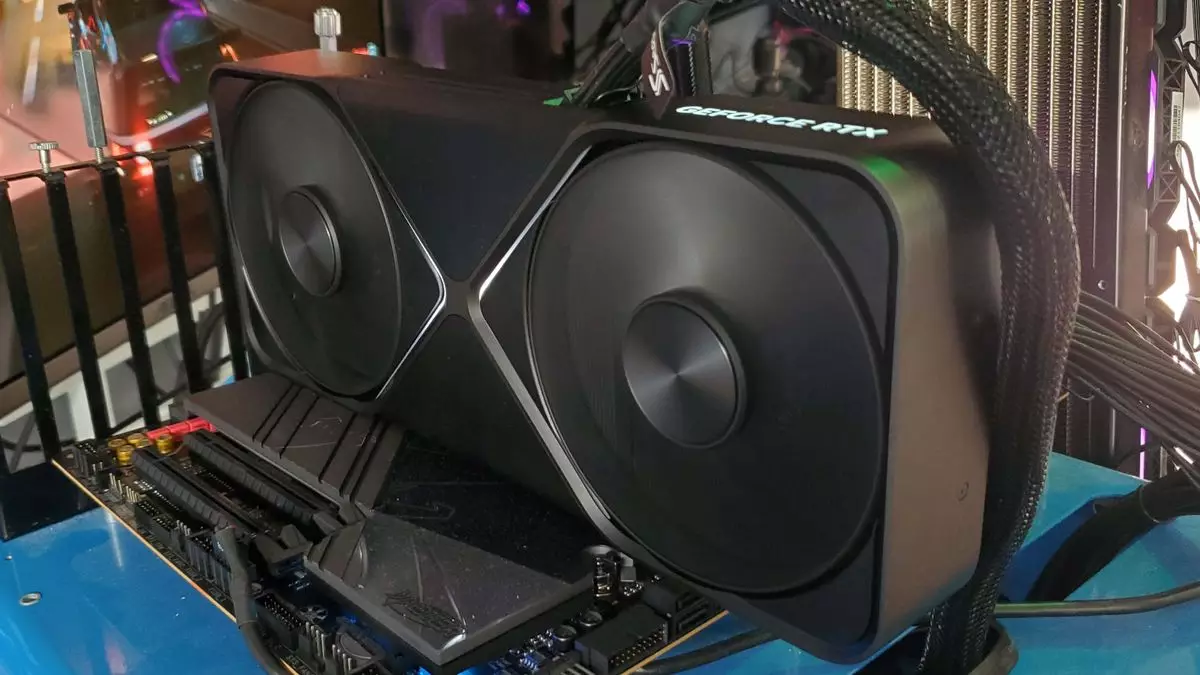The excitement surrounding the release of the RTX 5090 graphics card is palpable, especially for the small number of enthusiasts who have managed to acquire one. As users consider accessorizing their setups, particularly with power cables, it opens a broader commentary on the importance of quality connections in high-performance systems. In this article, we delve into the critical insights provided by Aris Mpitziopoulos, an industry expert, and what they mean for RTX 5090 owners looking to optimize their systems.
First and foremost, the unequivocal advice from Mpitziopoulos is clear: “Do not buy adapters or extenders.” This simple directive carries significant weight as it encapsulates a key principle in electrical engineering—the potential hazards of inadequate connections. In a world increasingly dominated by third-party components and flashy accessories, many consumers may feel tempted to use adapters to achieve the aesthetics they desire. However, this can lead to complications, particularly when dealing with hardware as demanding as the RTX 5090, which can draw upwards of 48 amps.
Mpitziopoulos warns of the dangers posed by low-quality or mismatched extenders. When an RTX 5090 operates under full load, an ill-fitting or poorly constructed connector could result in overheating and potentially hazardous melting. Electrical safety should always be the priority, and the potential for a system failure not only endangers the expensive graphics card but also the entire PC setup.
Despite the inherent risks associated with using adapters, it’s essential to recognize that the cables themselves—specifically, the 12V-2×6 cables designed for the RTX series—are built for high performance. Mpitziopoulos emphasizes that these cables are widely compatible and capable of delivering up to 600 watts (or about 55 amps). However, this is contingent on using dedicated cables that adhere to the manufacturer’s specifications.
A prevalent issue arises in power supply units (PSUs) that do not come with native 12V-2×6 outputs. Instead, some models rely on older architectures, utilizing dual 8-pin connectors. In such cases, proprietary cables may be required to ensure proper power delivery, and using alternate or unverified cables poses significant risks. Corsair’s Shift RM PSUs, for instance, use a unique configuration that could lead to confusion for buyers unaware of compatibility requirements.
While there may be a perception that using provided adapter cables from manufacturers like Nvidia is inherently problematic, that is not the case. The focus should lie on third-party products, which lack the manufacturer’s validation. A consumer experience with a previous graphics card model does not guarantee that the setup will perform adequately with the RTX 5090, given the considerable leap in power requirements.
The existing landscape of power supply options also calls for scrutiny. Newer PSUs released by manufacturers have begun to adopt the 12V-2×6 format, which employs longer sense pins to improve connection reliability. However, older models can still function with the RTX 5090, but only if used appropriately. The transition to the latest standard represents a positive step forward in promoting safety and optimal performance.
Investing in quality components when setting up a high-end gaming rig cannot be overstated. The advice from Mpitziopoulos serves as a reminder that flashy aesthetics must never override integral functionality. Those willing to shell out significant amounts for an RTX 5090 should also be prepared to invest in a compatible PSU that meets the demands of the graphics card. Doing so mitigates risks and assures stability in power delivery.
The thrill of acquiring cutting-edge technology like the RTX 5090 comes with a responsibility to understand the underlying mechanics of power connections. Opting for appropriate power supplies, adhering to manufacturer recommendations, and avoiding cheap adapters can save users from potential disasters. Ultimately, as we dive into the complexities of computing power, fostering a culture of safety and informed buying should accompany the excitement surrounding advanced graphics technology. For gaming enthusiasts, protecting their investments and ensuring the longevity of their systems is crucial in a rapidly evolving hardware landscape.

